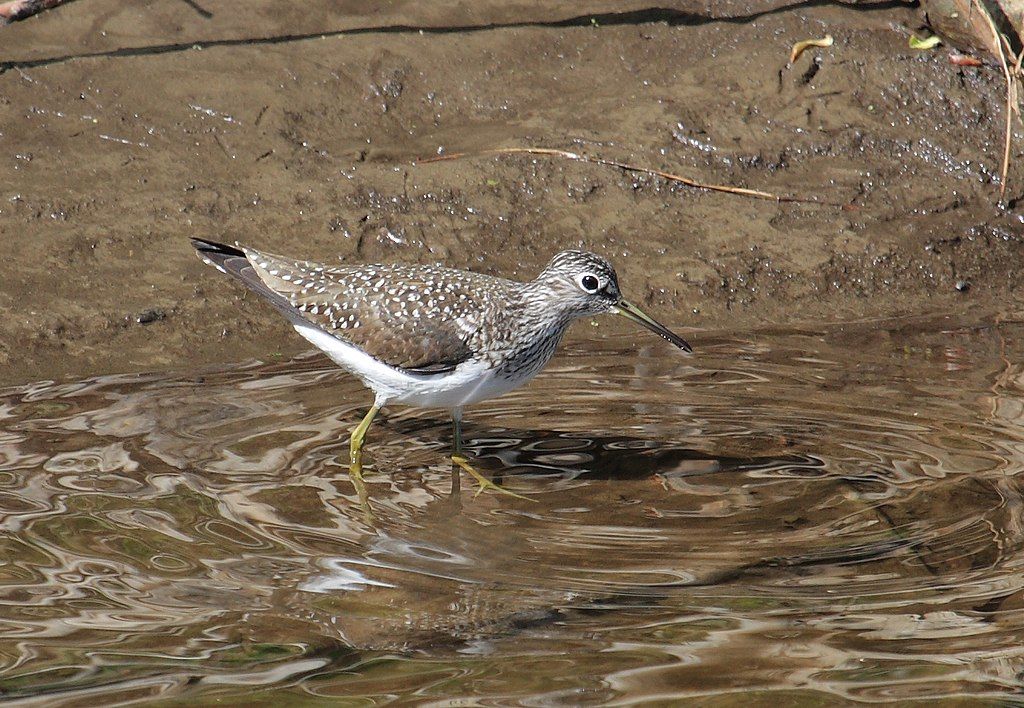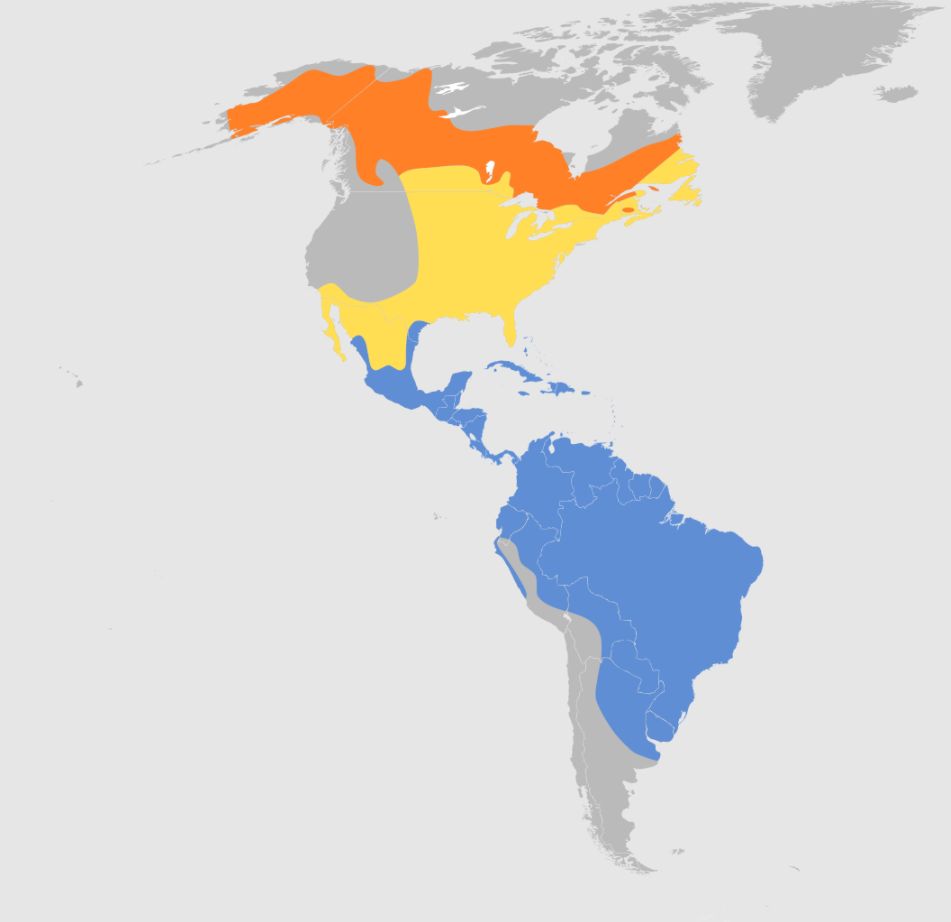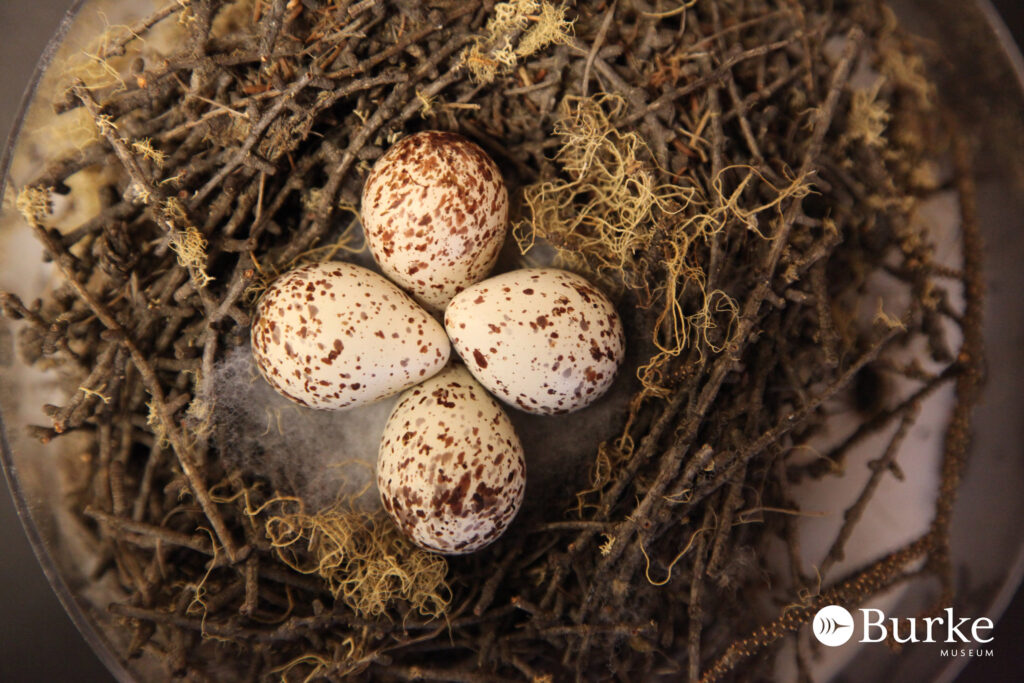
11 May 2021
Whenever we see this sandpiper species he’s up to his ankles(*) in water and is poking with his long bill to eat insects, crustaceans, mollusks and amphibians.
Solitary sandpipers (Tringa solitaria) are distinguished from other shorebirds by a white eye ring, white spots on dark back, and the fact that they’re usually alone. We see them on migration as they travel between their wintering grounds in Central and South America and breeding grounds in the muskeg bogs and boreal forests of Canada and Alaska.
Everywhere they go they land on the ground and walk in water. I have never seen one in a tree and yet …

When solitary sandpipers reach their breeding grounds they nest in trees.
Solitary Sandpipers use old nests of songbirds in trees, especially those of American Robins, Rusty Blackbirds, Canada Jays, and Cedar Waxwings, which are usually near the trunks of small trees a few yards above the ground, but may be higher. [that’s 9 ft or higher]
Males identify old songbird nests that have potential, and females apparently make the final selection. Females modify the nest by removing old lining and often relining with fresh materials.
— All About Birds, Solitary SANDPIPER ACCOUNT
The nest looks like this specimen at the Burke Museum. Notice that the eggs are pointed like common murre eggs.

It’s hard to imagine a shorebird standing in a tree so click here for a drawing of a solitary sandpiper at its nest from Birds of the World.
Incredible as it seems, this shorebird nests in a tree.
p.s. I know of only two other tree-nesting sandpipers: green sandpiper (a Eurasian relative of the solitary sandpiper) and Nordmann’s greenshank in Siberia.
(*) The backward-facing knees on birds are actually their ankles.
(photos and map from Wikimedia Commons, Burke Museum Flickr, click on the captions to see the originals)
Very interesting and what a great looking bird! Very jealous we don’t get to see them here in South Africa.